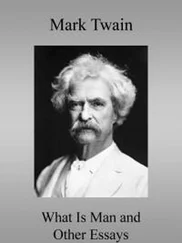DORIS LESSING
Play with a Tiger and Other Plays

Cover
Title Page DORIS LESSING Play with a Tiger and Other Plays
Play With a Tiger PLAY WITH A TIGER
About Play With a Tiger This play was first produced at the Comedy Theatre, London, on 22 March 1962, by Oscar Lewenstein, with the following cast: ANNA FREEMAN Siobhan McKenna TOM LATTIMER William Russell MARY JACKSON Maureen Pryor HARRY PAINE Godfrey Quigley JANET STEVENS Anne Lawson DAVE MILLER Alex Viespi Directed by Ted Kotcheff The action takes place in Anna Freeman’s room on the first floor of Mary Jackson’s house in Earls Court, London, SW5 At the opening of the play the time is about nine in the evening; at its close it is about four in the morning
Author’s Notes on Directing this Play Author’s Notes on Directing this Play When I wrote Play with a Tiger in 1958 I set myself an artistic problem which resulted from my decision that naturalism, or, if you like, realism, is the greatest enemy of the theatre; and that I never wanted to write a naturalistic play again. Now this play is about the rootless, declassed people who live in bed-sitting-rooms or small flats or the cheaper hotel rooms, and such people are usually presented on the stage in a detailed squalor of realism which to my mind distracts attention from what is interesting about them. I wrote Play with a Tiger with an apparently conventional opening designed to make the audience expect a naturalistic play so that when the walls vanished towards the end of Act One they would be surprised (and I hope pleasantly shocked) to find they were not going to see this kind of play at all. But there had to be a bridge between the opening of the play, and the long section where Anna and Dave are alone on the stage, and this bridge is one of style. This is why Anna’s room is tall, bare, formal; why it has practically no furniture, save for the bed and the small clutter around it; and why there are no soft chairs or settees where the actors might lounge or sprawl. This stark set forces a certain formality of movement, stance and confrontation so that even when Dave and Anna are not alone on the stage creating their private world, there is a simplicity of style which links the two moods of the play together. It is my intention that when the curtain comes down at the end, the audience will think: Of course! In this play no one lit cigarettes, drank tea or coffee, read newspapers, squirted soda into Scotch, or indulged in little bits of ‘business’ which indicated ‘character’. They will realize, I hope, that they have been seeing a play which relies upon its style and its language for its effect. DORIS LESSING
Characters CHARACTERS ANNA FREEMAN: A woman of thirty-five, or so, who earns her living on the artistic fringes. DAVE MILLER: An American, about thirty-three, who is rootless on principle. MARY JACKSON: About ten years older than Anna: a widow with a grown-up son. TOM LATTIMER: Who is on the point of taking a job as business manager of a woman’s magazine. About thirty-five, a middle-class Englishman. HARRY PAINE: Fifty-ish. A journalist. JANET STEVENS: In her early twenties, the daughter of an insurance agent – American.
Act One
Act Two
Act Three
The Singing Door
Characters
The Singing Door
Each His Own Wilderness
About Each His Own Wilderness
Characters
Act One
Act Two
About the Author
Author’s Note
Also by the Author
Read On
The Grass is Singing
The Golden Notebook
The Good Terrorist
Love, Again
The Fifth Child
Copyright
About the Publisher
PLAY WITH A TIGER
This play was first produced at the Comedy Theatre, London, on 22 March 1962, by Oscar Lewenstein, with the following cast:
| ANNA FREEMAN |
Siobhan McKenna |
| TOM LATTIMER |
William Russell |
| MARY JACKSON |
Maureen Pryor |
| HARRY PAINE |
Godfrey Quigley |
| JANET STEVENS |
Anne Lawson |
| DAVE MILLER |
Alex Viespi |
Directed by Ted Kotcheff
The action takes place in Anna Freeman’s room on the first floor of Mary Jackson’s house in Earls Court, London, SW5
At the opening of the play the time is about nine in the evening; at its close it is about four in the morning
Author’s Notes on Directing this Play
When I wrote Play with a Tiger in 1958 I set myself an artistic problem which resulted from my decision that naturalism, or, if you like, realism, is the greatest enemy of the theatre; and that I never wanted to write a naturalistic play again.
Now this play is about the rootless, declassed people who live in bed-sitting-rooms or small flats or the cheaper hotel rooms, and such people are usually presented on the stage in a detailed squalor of realism which to my mind distracts attention from what is interesting about them.
I wrote Play with a Tiger with an apparently conventional opening designed to make the audience expect a naturalistic play so that when the walls vanished towards the end of Act One they would be surprised (and I hope pleasantly shocked) to find they were not going to see this kind of play at all.
But there had to be a bridge between the opening of the play, and the long section where Anna and Dave are alone on the stage, and this bridge is one of style. This is why Anna’s room is tall, bare, formal; why it has practically no furniture, save for the bed and the small clutter around it; and why there are no soft chairs or settees where the actors might lounge or sprawl. This stark set forces a certain formality of movement, stance and confrontation so that even when Dave and Anna are not alone on the stage creating their private world, there is a simplicity of style which links the two moods of the play together.
It is my intention that when the curtain comes down at the end, the audience will think: Of course! In this play no one lit cigarettes, drank tea or coffee, read newspapers, squirted soda into Scotch, or indulged in little bits of ‘business’ which indicated ‘character’. They will realize, I hope, that they have been seeing a play which relies upon its style and its language for its effect.
DORIS LESSING
ANNA FREEMAN: A woman of thirty-five, or so, who earns her living on the artistic fringes.
DAVE MILLER: An American, about thirty-three, who is rootless on principle.
MARY JACKSON: About ten years older than Anna: a widow with a grown-up son.
TOM LATTIMER: Who is on the point of taking a job as business manager of a woman’s magazine. About thirty-five, a middle-class Englishman.
HARRY PAINE: Fifty-ish. A journalist.
JANET STEVENS: In her early twenties, the daughter of an insurance agent – American.
The action of this play takes place in ANNA FREEMAN’S room on the first floor of MARY JACKSON’S house, on a street in London with heavy traffic. ANNA has lived here for some years. There is another room, behind this one, used by her son, now at school; but ANNA sleeps and lives in this room. It is very large and looks formal because it is underfurnished. There are double doors at left-back. When they are open the landing can be seen, and part of the stairway leading up. The house was originally built for rich people and still shows signs of it. The landing and stairs are spacious and carpeted in dark red; the banisters are elegant and painted white. The upper part of the doors are of glass, and therefore the doorway has a dark red curtain, usually drawn back. The room is painted white, walls and ceilings. There is a low wide divan, covered in rough black material, in the right back corner; a window, with dark red curtains, in the right wall; a large, round, ornate mirror, on the left wall; a low shelf of books under the window. The floor is painted black and has in the centre of it a round crimson carpet. There are two stiff-looking chairs on either side of the mirror, of dark wood, and seated in dark red. The life of the room is concentrated around the divan. A low table by its head has a telephone, and is loaded with books and papers, and a small reading light. At the foot of the divan is another low table, with a typewriter, at which
Читать дальше













